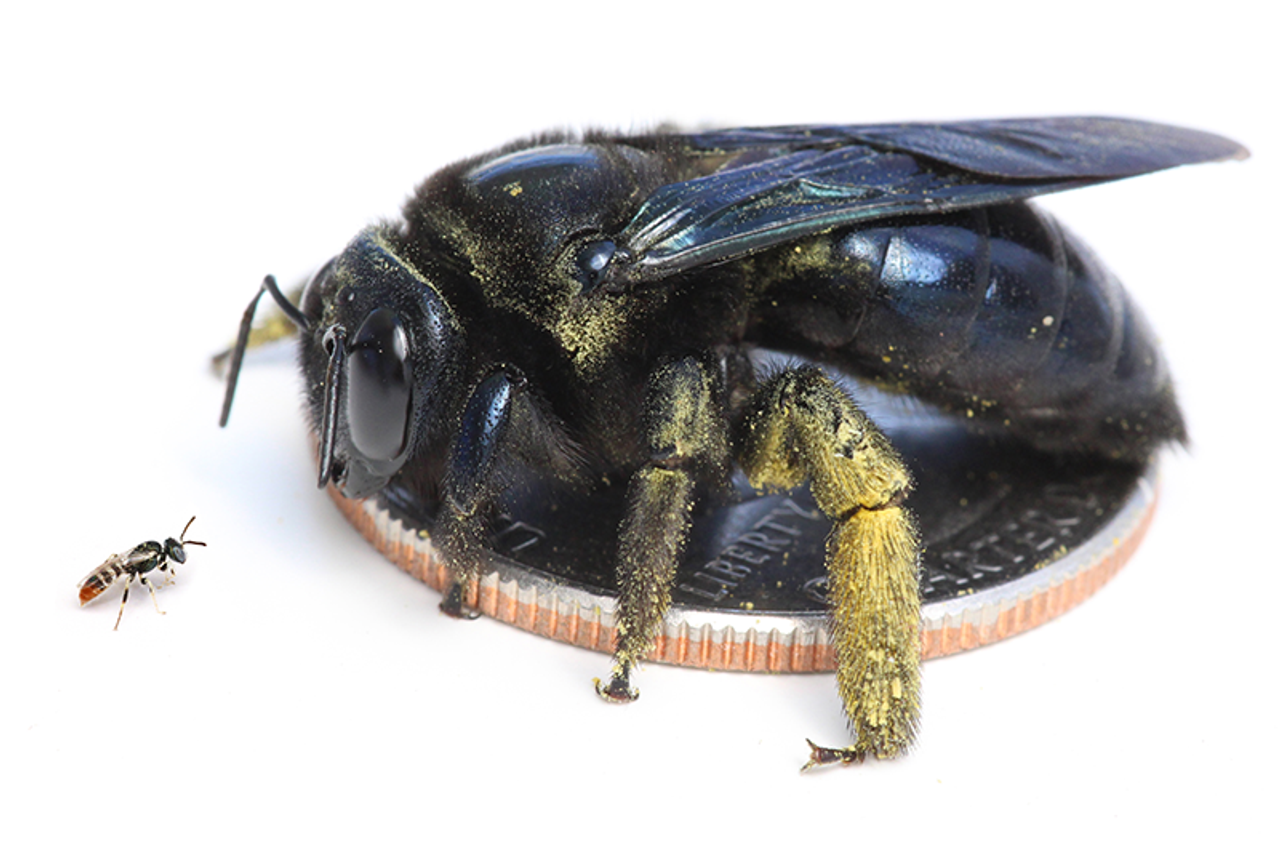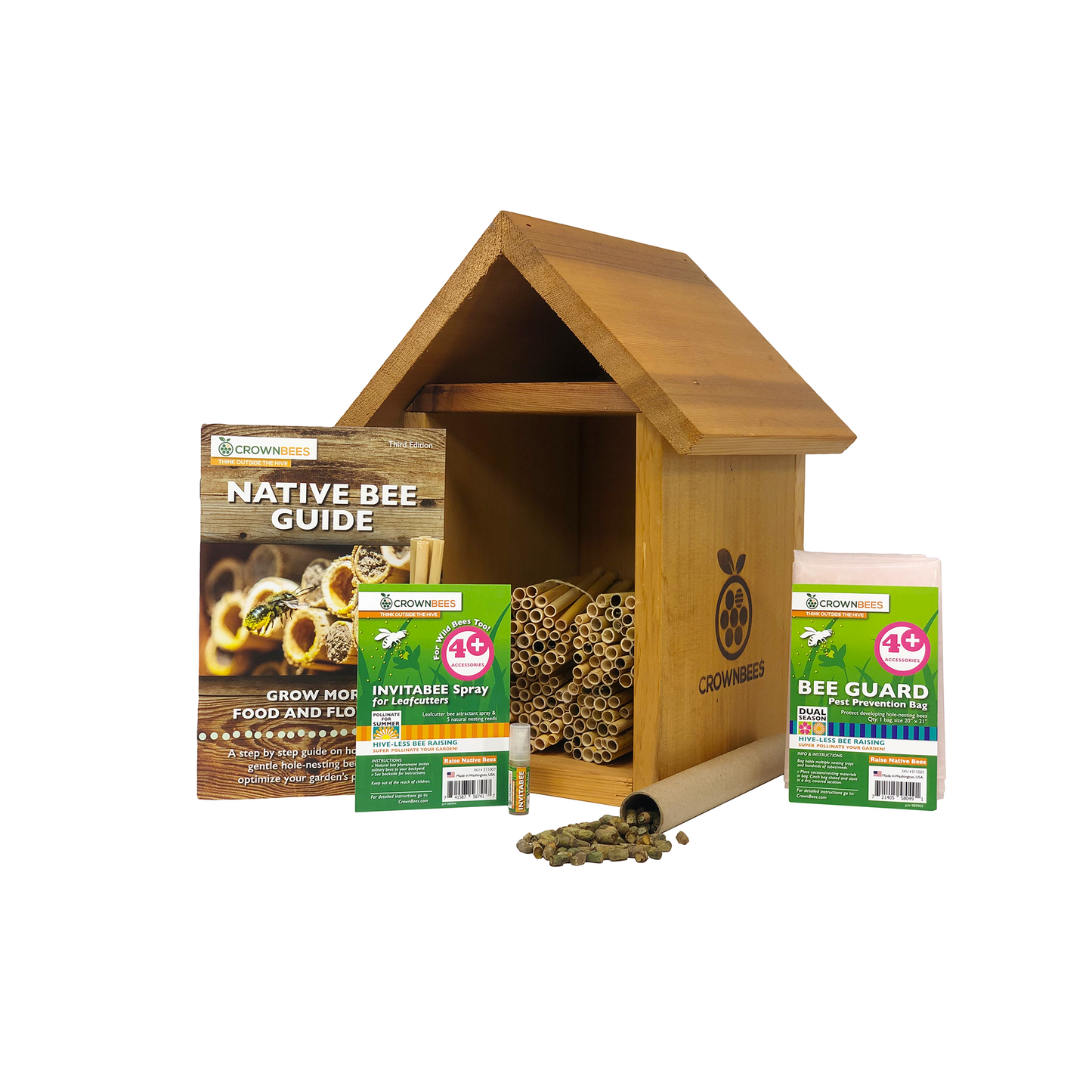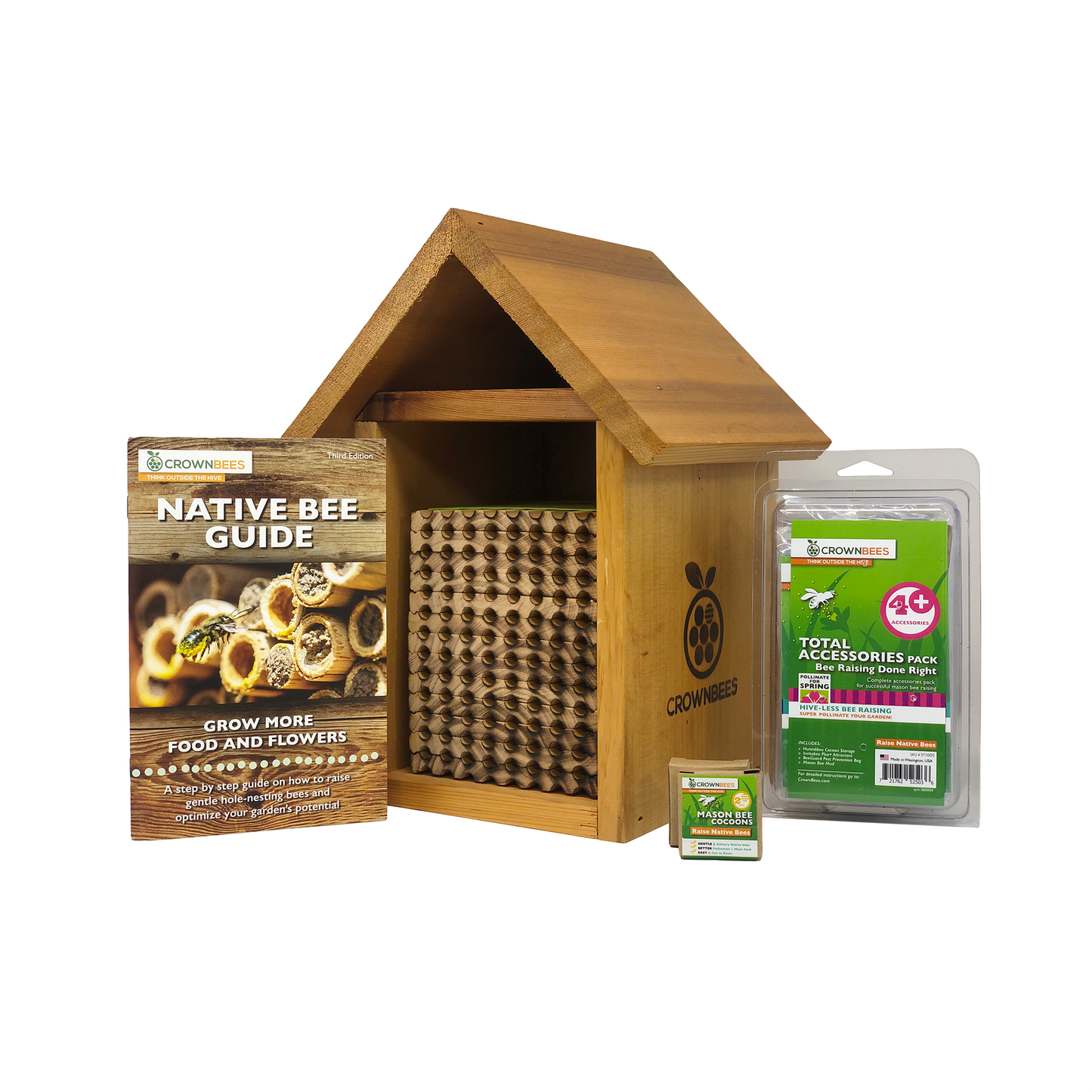
Did you know there are over 20,000 known bee species globally, and 4,000 of those species live in North America? The smallest, Perdita minima, is less than two millimeters long! Each species is unique and pollinates different plants at different times. For instance, mason bee species are essential for blueberry and raspberry pollination, while squash bees are the best for squash and pumpkins. While not every bee you see is a super-pollinator, all of them combined are important in helping our diversity of plants thrive.
But, the bees need our help. Many populations are declining due to habitat loss, heavy pesticide use, climate change, and urbanization. Fortunately, research has shown that there are some things you can do to support your local bee populations! This post will explain a few simple steps you can do to create a bee-friendly habitat that can help local bees thrive - applicable to small and large gardens, urban and rural areas, and everywhere in between.
1. Offer nesting places
Most wild bee species are solitary. About two-thirds of solitary nesting bees use tunnels in the ground, while one-third use hollowed-out plant stems or tunnels in fallen branches. There are a variety of ways to create nesting places in your area:
- Allow a dead branch or stump to linger in your yard. Beetles will burrow into the wood, and birds will peck into the wood to access these insect treats, creating perfect chambers for cavity-nesting bees to lay eggs.
- Install a Bee House for cavity-nesting bees. These are great for providing nesting habitat and observing the bees as they work and are a fantastic conversation starter! Just remember, keeping the nests clean is important to limit disease build-up.
- Minimize mulching or use shredded leaves instead of chipped wood. Ground nesting bees need access to bare ground, and even an inch of mulch can be too heavy for many small bees to crawl through. Using shredded leaves provides the same weed suppression benefits but is light enough to allow bees to pass through.

2. Provide a water and mud source
Just like us - bees need fresh water to drink. However, most can't land in open water, so even birdbaths put them at the risk of drowning or being caught by predators (yes, some birds eat bees). We suggest creating a bee bath! There are lots of great DIY resources online to help you make a bee bath that is both functional and beautiful; just remember:
- It should have safe landing islands and ways to crawl out should the bees fall in.
- Replace the water every few days to eliminate mosquito larvae.
- Moss is an excellent addition as it absorbs water, creating a moist sponge-like surface that tiny pollinators can land on and drink from.
Some bee species, such as the mason bee, use moist, clayey mud to protect each nesting chamber. You can check to see if your area provides a clayey mud source by opening a wedge in your soil, add a bit of water, and check the soil texture. If it does not stick together well when wet, your soil is probably sandy or sandy loam. If this is the case, you can add a bit of mud to your yard or garden.
Pro tip: Don't place the mud in direct sunlight and check on it often to make sure it hasn't dried out.

3. Say no to pesticides and buy plants from a trusted nursery
Avoid buying plants, bulbs, seeds, or compost that contain pesticides or insecticides. While they are marketed to kill 'pests,' bees are insects, and using insecticides can harm local bee populations. A recent study found that many garden plants labeled as 'pollinator-friendly contained significant amounts of pesticides, including neonicotinoids. Try to buy organic gardening products sourced from a trusted nursery or farmers' market. Or better yet, swap plants and bulbs with your friends (it's free)!
If you must spray:
- Only use organic or natural pest deterrents such as neem oil, garlic, and chili pepper.
- Spray at night when bees and other pollinators are not active. Try to spray when there is no wind or rain.
Making your garden more pollinator-friendly will bring in more natural predators like birds and ladybugs, which will help keep pests under control naturally.

4. Embrace some 'weeds.'
Some garden plants might not be beautiful in the traditional sense, and some are just outright weeds. But, some weeds are very beneficial for bees and other pollinators. For example, dandelions are a bee-friendly plant that provides a necessary pollen source for early spring pollinators. Plus, you can harvest the greens and yellow flowers yourself - they're edible and delicious!
Weeds can also help your garden by protecting, fertilizing, and conditioning the soil. Some have deep roots that bring nutrients and water up from the deep ground, some help control erosion, and some increase the organic matter content of the soil as they continually grow and die.
Let's be clear; we're not suggesting that you let weeds take complete control of your garden. But, try setting aside small areas of your garden where weed management is a bit more relaxed - you may start to love the look of your 'wild' garden. Plus, think of all the extra time you'll have not weeding the whole thing!

5. Plant a variety of native plant species
This is a big one! So big that we're dedicating our next blog post to helping you learn which native plant species are best to plant in your lawn and garden based on your specific region. So, for now, we want to highlight the importance of planting native species and including variety in your plantings.
Native plants are species naturally found in your area. Research shows that native plants are 4x more attractive to pollinators than non-natives, so by planting natives in your garden, you are supplying pollinators with the nutrition they need to thrive (Penn State College of Agricultural Sciences). It makes sense when you think about the fact that our native bees have evolved with native plants.
An added benefit to planting native plants is that they are typically low-maintenance since they're already adapted to the local growing season, climate, and soils.
Variety is essential because most bee species are only active for a short period, at a specific time of year, and feed on specific plants. So, it's important to plant a variety of species that blossom at different times. Variety provides a constant supply of nectar and pollen - from early spring to late fall - for the bees.

Wherever you live, by implementing these five simple steps, you'll be helping to create a nesting habitat for your local bee populations! The bees and your garden will thank you!


